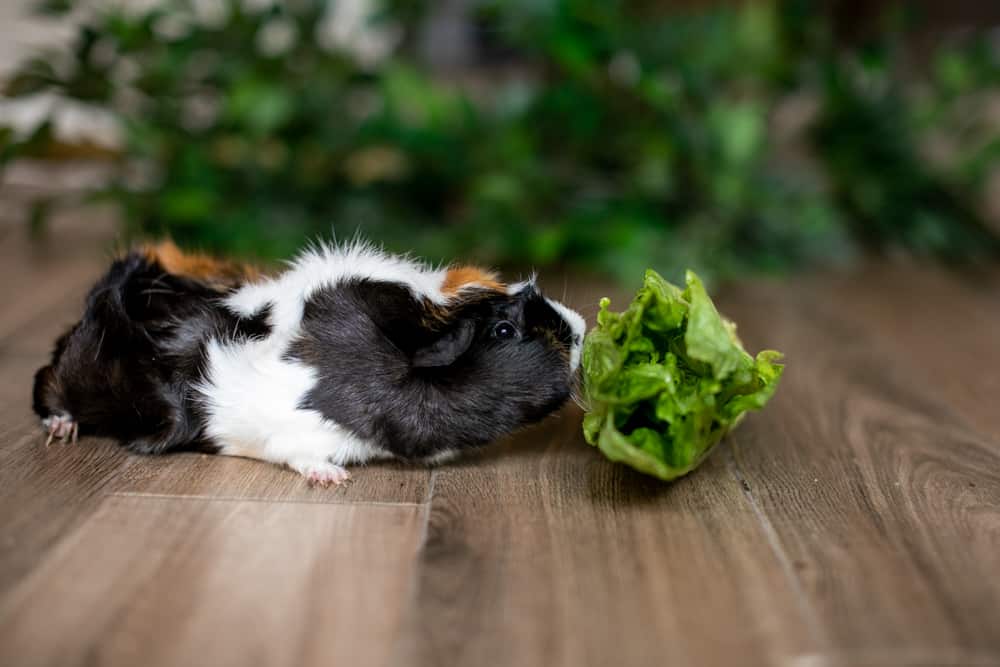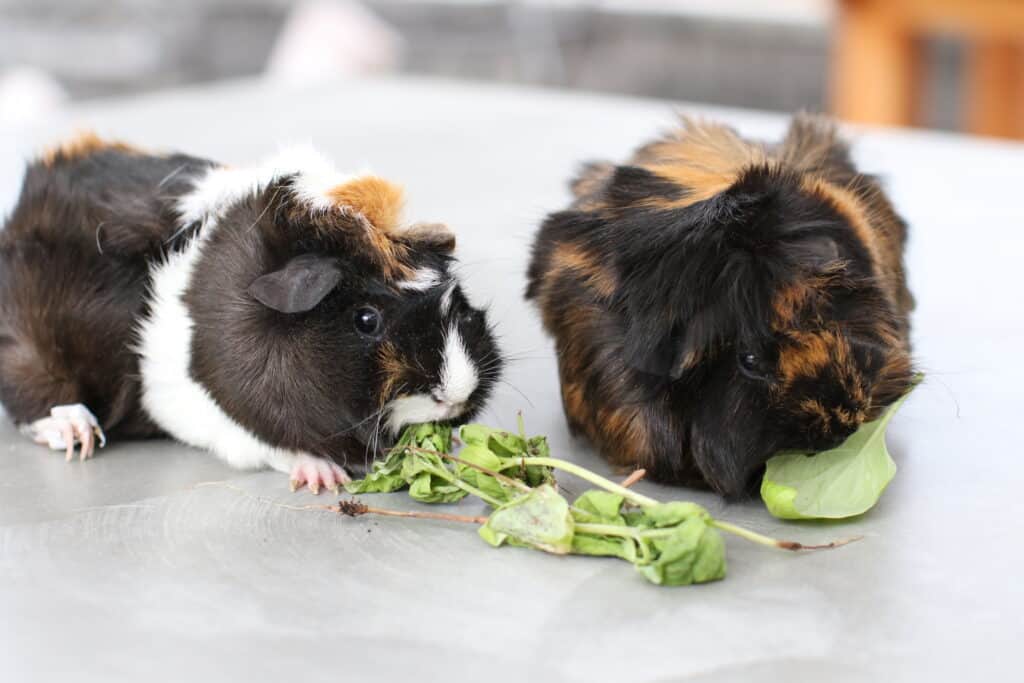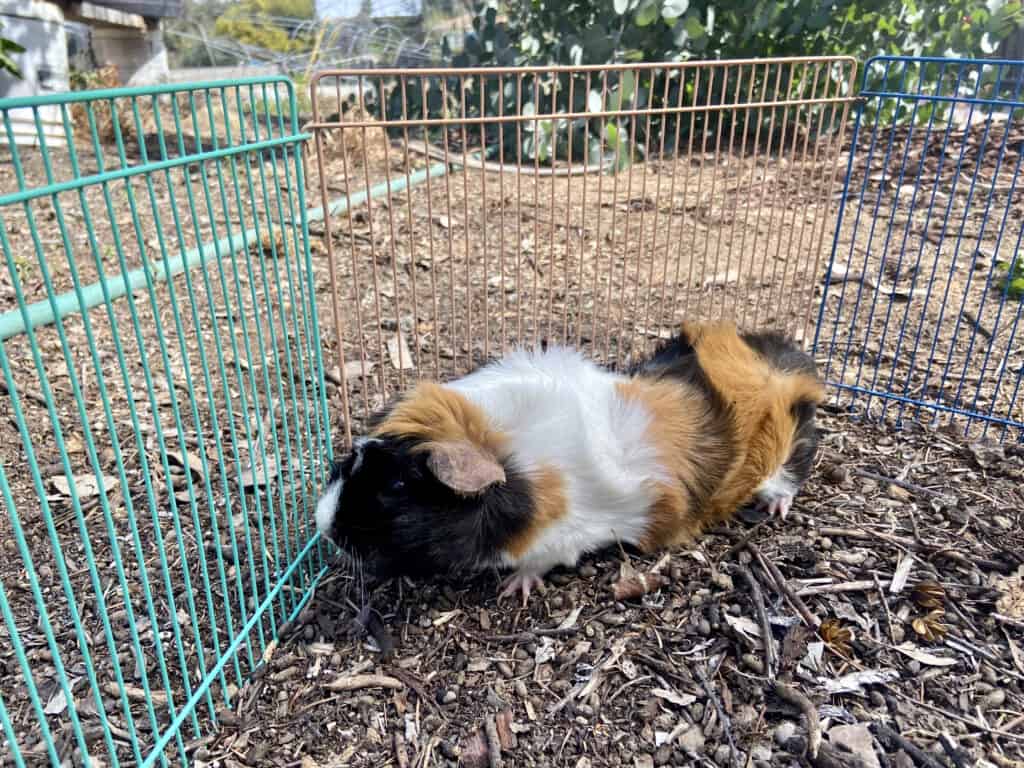As an Amazon Associate we earn from qualifying purchases.
Arugula, also known as rocket, is a leafy green vegetable that is sometimes used in salads. It has a peppery flavor and is high in nutrients. So can guinea pigs eat arugula?
What Is Arugula?
Arugula, also known as rocket, is a leafy green vegetable that is sometimes used in salads.
Arugula is a leafy green vegetable that has a peppery, a bit bitter taste. It’s often used in salads, but can also be cooked. Arugula is high in vitamins A and C, as well as folate. It’s also a great provider of fiber.

Can A Guinea Pig Eat Arugula?
Yes, you can feed arugula to your furry pets. The nutritional value of arugula suggests that it is safe for guinea pigs to eat. Arugula is a great source of fiber, vitamin C, and vitamin K.
It also contains antioxidants that can help protect against disease. Additionally, arugula has a low-calorie count and is low in carbohydrates. This makes it a healthy choice for your pets who need to maintain a healthy weight or who have diabetes.
The Health Benefits Of Arugula
Arugula is a leafy vegetable that is often used in salads. It has a peppery flavor and is a great source of nutrients, including essential vitamin K, C, and A, as well as minerals like calcium and potassium, that help them have a robust immune system and cardiovascular system. Arugula also has some health benefits for your little pets, which are discussed below.
- It has a high level of fiber. Fiber helps keep the digestive system functioning properly, and can help reduce the risk of constipation.
- In addition to its fiber content, it also contains antioxidants which can help protect against disease. So if you’re looking for a healthy way to add some variety to your guinea pig’s diet, feeding arugula is a great option!
Arugula Recipes For Your Furry Pet
Arugula is a great addition to your guinea’s diet. It has a high nutritional value and is packed with antioxidants, which help keep your pet healthy. Here are some recipes you can cook with arugula that your furry pet will love:
- Arugula leaves and apple salad: This salad is a great way to add some freshness to your guinea’s diet. It’s also a great source of vitamins C and A.
- Arugula leaf and cheese omelet: This omelet is a great way to get your guinea’s daily dose of protein. It’s also a great source of vitamins B6, B12, and D.
- Arugula and bacon salad rocket: This salad is packed with flavor and nutrition. It’s a great source of fiber, protein, and vitamins A, C, and K.
- Arugula pesto pasta: This pasta dish is a great way to add some variety to your pet’s diet. It’s a great source of fiber, protein, and vitamins A, C, and K.
- Arugula smoothie: This smoothie is a great way to get your guinea’s daily dose of antioxidants. It’s also a great source of fiber and vitamins C and E.

Serving Size
Arugula is a leafy green vegetable that is high in nutrients. Guineas can eat small amounts, but too much can cause them to become sick. It is important to know how much arugula you can feed a guinea pig. You should only give your pets a little bit at a time and watch them to make sure they don’t have any negative reactions.
It is a great source of vitamin C, which is important for a guinea pig’s health. It also contains other essential nutrients like folate and potassium. It is a tasty addition to your guinea’s diet and it’s good for them, too!
Possible Side Effects
While it is safe for people to eat, it can be dangerous for guinea pigs. If it eats too much arugula, it can experience side effects such as:
- Gastrointestinal problems such as diarrhea, constipation, and nausea
- Allergic reactions such as rash, hives, and chronic asthma
- Oxalate poisoning, can cause kidney stones and other health problems.
- Interaction with certain medications, which could lead to adverse effects.
- Inability to absorb certain nutrients from the food.
The Guinea Diet
These little creatures are herbivores, meaning that their primary source of nutrients comes from plants. Aside from arugula, there are other new food and other leafy greens that you can feed them. Their diet should be made up of hay, other veggies, and a small number of pellets.
Hay
Hay is an important part of their diet. They need hay to help them digest their food properly. It also helps keep their teeth clean and healthy. There are many different types of hay, but the most common type is Timothy hay. Alfalfa hay is also a good choice for guinea pigs.
Fresh Vegetables
Fresh veggies are also important as they provide important vitamins and essential minerals.
There are many benefits to feeding vegetables and they make a great addition to their diet. Some of the best options for fresh vegetables include:

Broccoli – This is a great vegetable for guineas because it is high in fiber, vitamin C, and other nutrients.
Cucumbers – These are refreshing and healthy snack for guineas that are high in water content and vitamins A and C.
Carrots – Carrots are a great source of beta carotene, vitamin A, and fiber. They can help keep your guinea’s fur looking healthy and shiny.
Spinach – Spinach is packed with antioxidants, vitamins, minerals, and other nutrients. It is a great choice for guineas.
Pellets
While vegetables are important, you should also provide your guinea with a small number of pellets. These pellets should be high in fiber and vitamin C. Pellets are a great source of nutrition for guineas and they should not be skipped.
It is important to always provide fresh water for guinea pigs and to change it daily. They should also have access to a sheltered area where they can escape from the sun and cold weather.
A healthy diet is important for keeping them healthy and happy. By providing a balanced diet, you can help your pet stay healthy and live a long life.
Final Thoughts
A final word on guinea pigs and how to serve arugula: While it is certainly safe for them to eat small amounts of arugula, it is important not to overfeed them this leafy green vegetable. Arugula is a high-calorie food, and like all foods, too much of it can lead to weight gain. So go ahead and give your pet a taste of arugula now and then, but don’t make it a staple of their diet.